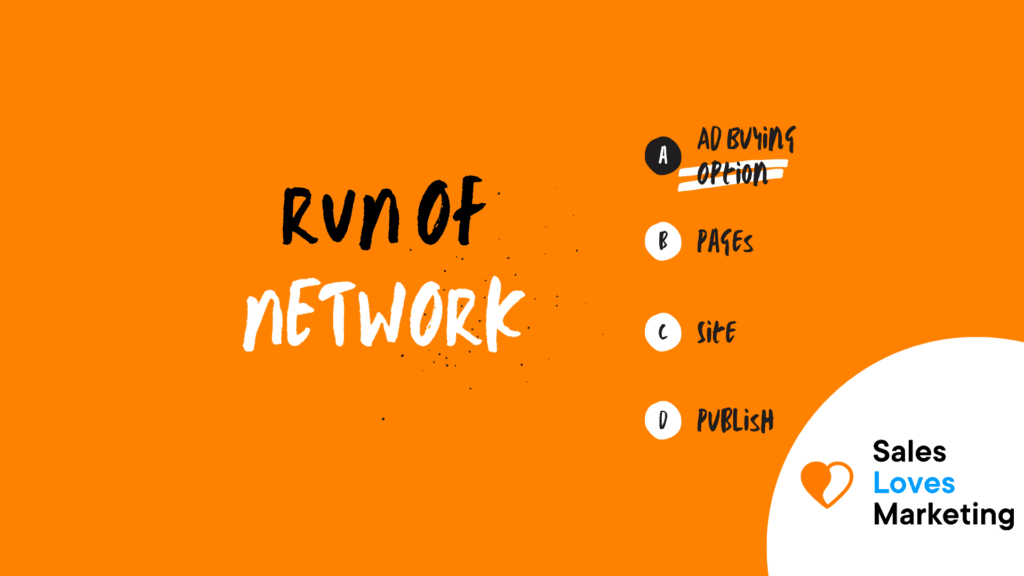What is Run of Network (RON)?
Run of network (RON) refers to a publisher allowing ads to target all available ad inventory within their network of sites. This means that if the advertiser’s ads are targeted to run of network, they can appear on any page within the publisher’s sites.
Why is the Run of Network important in Digital Marketing?
Run of Network (sometimes referred to as “RON”) is when an advertising campaign or PMP is applied to the entire network of websites within an Ad Network. With a “Run of Network” campaign, you cannot specify what type of websites or placements you would like your ad to appear on. By choosing Run of Network, the advertiser usually forgoes premium positioning in exchange for more advertising impressions at a low CPM Rate.
Run of Network may not be appropriate for all brand advertisers, for example, if you are advertising a Vegan product. You do not want your ad to appear on a BBQ Website.
Two of the benefits of using Run of Network as a targeting option is in return for not having a choice over ad placements or websites; you will often see a high scale of impressions delivered while seeing a significantly lower CPM rate. This can be ideal for advertisers running Retargeting campaigns or campaigns with a KPI of last-click attribution.
What are the advantages and disadvantages of Run of Network?
Advantages
- It makes for an easier and more straightforward setup of line items.
- Since it’s easier, it’s less time-consuming.
- It can be used as a method to monetize unfilled or unsold ad inventory.
Disadvantages
- Non-granular optimization (can’t separate line item optimization for inventory not performing equally)
- Tends to result in unfair competition, especially for managed demand
- As a publisher, you have a lack of control over delivery (e.g., frequency cap, impression cap, day & time, creative rotation)
- If using RON to fill unsold inventory generally leads to lower RPMs.
Run of Site vs. Run of Network
Benefits of ROS
The primary benefit of ROS is that you have a better idea about what you’re getting for your money.
With Run-of-Site, you know that you want site X, and you’ll only get traffic from site X.
This can be extremely useful in a wide variety of circumstances. For example, you might know that a given forum has a very good reputation and is heavily frequented by your potential customers.
In this case, you might want to target this site exclusively, and Run-of-Site might be the best way to do it.
Drawbacks of ROS
Run-of-Site is generally more expensive, often considerably more expensive, than Run-of-Network. It’s more exact, and specific traffic needs to be provided, and the price reflects this.
The other drawback is quantity. The volume of traffic that you can expect with Run-of-Site is lower, sometimes considerably lower, than you could expect with Run-of-Network.
Benefits of RON
The primary benefit of a Run-of-Network campaign or ad placement is price. Because you are not selecting specific sites and because the Network can put it in front of just about any traffic that they have available, the price is correspondingly lower.
So you get significantly more reach for an often much lower price.
Drawbacks of RON
The primary drawback of a Run-of-Network campaign is essentially its main benefit, just seen from another perspective.
It’s totally untargeted at a site level. So the only way to be sure that the traffic that you’re getting fits your criteria is by choosing a more or less specific ad network.
Frequently networks dump their unsold (read: lower quality) traffic on Run-of-Network offers. This means that your ad might appear on the least desirable sites on the network as the network uses your order to fill their more difficult to fill ad space.
